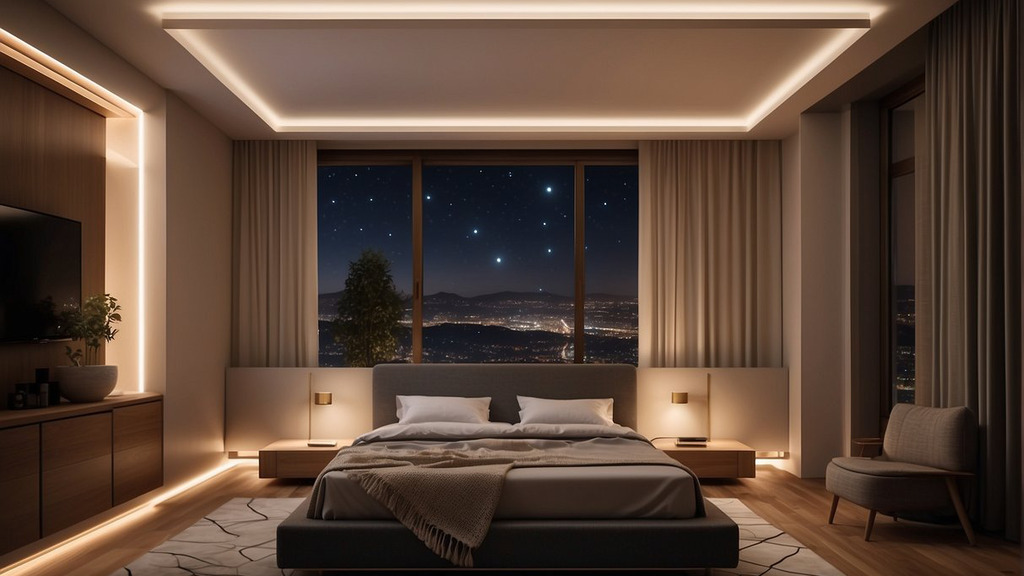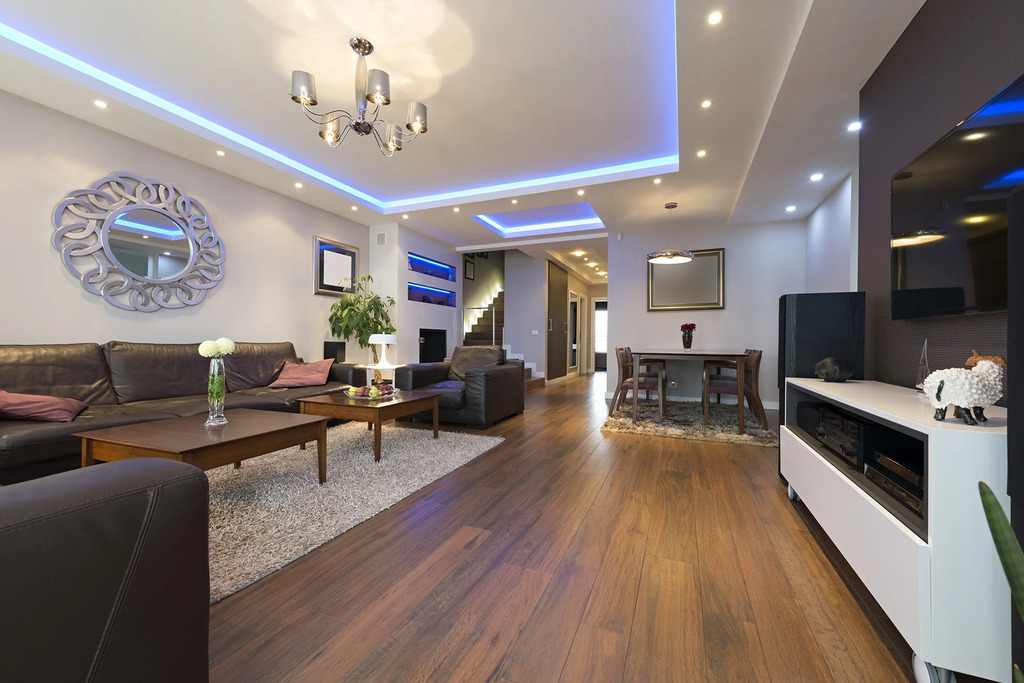Explore this post with:
LED color temperatures refer to the warmth or coolness of the light. Measured in Kelvin (˚K), a lower color temperature means the light is warmer (i.e., redder) than others. Meanwhile, a higher color temperature means the light is cooler (i.e., blue and white).
This difference in LED lighting has a huge impact on your room’s atmosphere. Different hues can create a different mood and vibe, which you may or may not enjoy. So, it’s really important to pay attention to this detail. In today’s post, we will help you figure out the right and proper LED color temperature for different rooms. Read on!
What Are Different LED Color Temperatures?

LED lighting have a color temperature range between 1650K and 6000 K. Both of these temperatures are extreme, and you are not likely to find them in any room. Be it your home or workspace, people don’t use these temperatures.
Generally, LED lights between 2700K and 3000K are in the warm white category. They have a traditional incandescent bulb glow. They create an inviting yet cozy vibe that is suitable for bedrooms and outdoor living spaces like patios.
4000K is considered to be right between warm and cool. It’s the natural white that creates a lively atmosphere. People prefer to use it at both work and home.
LED light hues above 4500K are in the cool white category. They have no warmth in them, which makes people alert and focused. This bluish-white temperature range is suitable for workspaces.
| Color Temperature | Category |
| 2200K | Very warm white |
| 2700K to 3000K | Warm white |
| 4000K | Natural white |
| 4500K | Crisp white |
| 4500K to 5000K | Cooler white to blue |
| 6000K to 6500K | Daylight |
What’s the Best Color Temperature for Rooms?

Now that we know about the different color temperatures. Let’s talk about the ideal temperature for each room and its impact on our lives!
1. Bedroom
Bedrooms are our personal retreats—safe spaces to relax and get away from worldly pressures. You don’t want to feel alert and attentive in this room; instead, you want to feel calm and peaceful. An LED light between 2700K to 3750K is perfect for creating such an atmosphere. If your bedroom is huge, you can also experiment with different warm hues for a customized environment.
2. Reception
The reception of your house may be a hallway or a small space with mats, decorations, and stands to hang coats. Your reception might also be a complete room with sofas and tables for the guests.
Regardless of what your home reception looks like, it’s recommended to keep a very warm white color temperature (1800K to 2700K). This is because a warm light calms you down and gives you a relaxed, happy feel. Anyone who comes into your home will feel amazing immediately after entrance. Their anxiety of stress will be reduced, and they will feel more comfortable in this new space.
3. Kitchen
While some people like having warm kitchens, the majority prefer a cool color temperature. The clean white lights increase visibility in the room. You can focus on the task at hand and cook meals without distractions.
The ideal color temperature is 4000K to 5000K. Anything above that will give off a very crisp white light that’s useless because you won’t really be able to see anything properly. It will hurt your eyes, too.
4. Dining Room
The dining room is the only place that brings together a family twice a day and helps them reconnect. It’s also where most friends and relatives socialize with each other. So, a welcoming and comfortable environment is what we should aim for.
A suitable color temperature is 2700K (warm white) or 4000K (natural white). If you go with warm white, you should consider spotlights and chandeliers for a dramatic ambiance. This can also help give a luxury, old-money vibe to the space.
5. Home Office
Nowadays, every house has an office. To stay focused, choose a blue-and-white light environment. A color temperature between 3700K and 5000K is recommended. You can also add some warm lamps and spotlights to create variation. However, if you prefer a natural light environment, go with a 4000K color temperature.
Last Words
All in all, the proper LED color temperature depends on the vibe and feel you want to create in that specific room. The general idea is to go with warm hues for a relaxed atmosphere and cool hues for an alert one. So, go on and experiment to find your perfect color temperature!
In Case You Missed It!
About the Author: Nishant Desai
Nishant Desai has over 8+ years of experience in SEO and blogging. His blogging expertise can organically increase online visibility and traffic for blogs and websites. With his SEO expertise, he has already contributed to iGeeksblog, Firstsportz, and Firstcuriosity. In addition, he can create content strategies, conduct keyword research, publish optimized blogs, and resolve technical issues.




